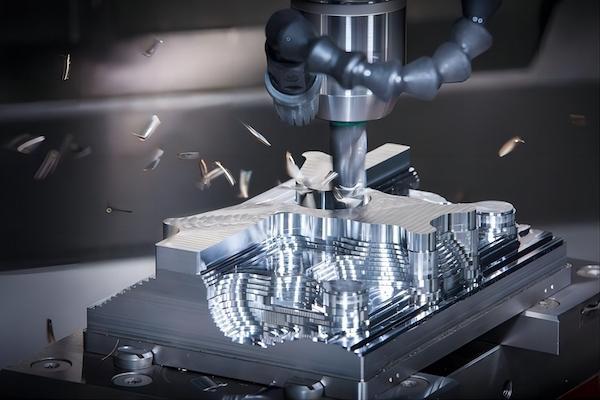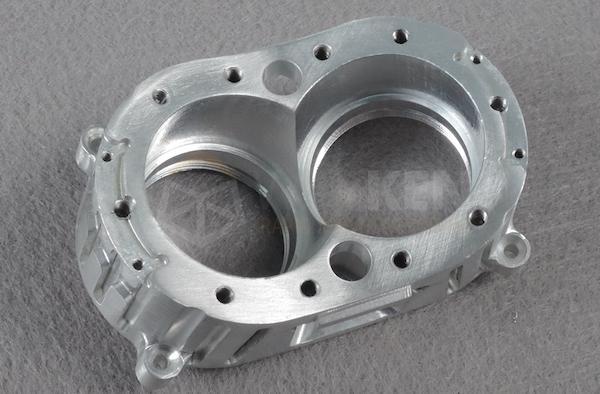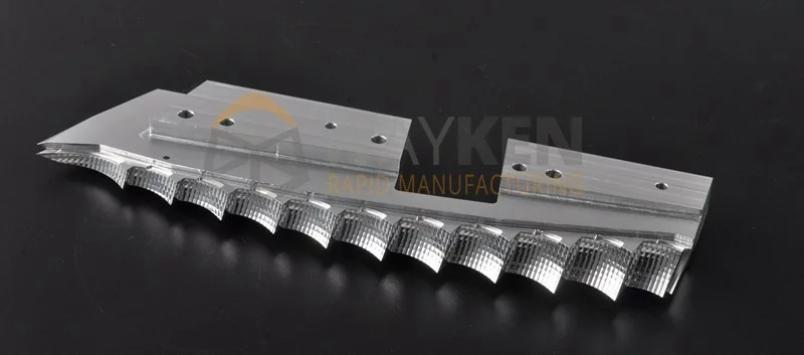The lightweight feature, aesthetic design, and high mechanical strength levels are examples of the tremendous advantages that make thin-walled aluminum alloy parts an important aspect of the manufacturing industry and play an irreplaceable role in the custom aluminum machining of the automotive industry and aerospace industries.
Aluminum alloys are favored due to their features of low density and a high strength-to-weight ratio, but the lack of rigidity in thin-walled structures that easily deform presents hurdles on realizing these machined components.
Moreover, the thin-walled parts exhibit a low melting point during the aluminum custom machining process. High-speed friction generated between the aluminum alloy material and the tool results in further heating at the machined part, which will affect the precision of machining, which is one of the reasons why the machining of aluminium alloy thin-walled parts is difficult.
The article, based on practical experience, presents some measures in the list. These would ensure that the deformation of aluminum alloy thin-walled parts can be controlled so that the batch processing effect is guaranteed for such parts.
1.Control of Machining Temperature
The primary factors that influence the temperature of machining are the cutting parameters: feed rate, spindle speed, and axial depth of cut. It is possible to effectively suppress vibration by adjusting milling process parameters. When using a milling cutter, the feed per tooth should ideally fall between 0.1 and 0.15 mm; in addition, it is advisable to limit the depth of cut to 1 mm during cutting— this can help achieve better machining results with lower vibration during production of quality parts.

Vibration can be effectively controlled by the selection of cutting process parameters. A spindle speed that is not overly aggressive is key to preventing vibration; A carefully chosen feed rate can mitigate sudden changes during machining and eliminate vibration by increasing the feed rate of each gear, reducing the probability of deformation. Every cutting parameter has a more direct influence on vibration suppression and, hence, it becomes necessary for all cutting parameters to be optimized prior.
2. Selecting Standardized Fixtures
Choosing fixtures is of significant importance in the machining of thin-walled aluminum alloy parts. The choice of an appropriate fixture can decrease the deformation rate. Several important factors include:
To Select the Fixture Design Scheme
Analyze the machining experience of aluminum alloy thin-walled parts to establish the best fixture parameters. In addition, when setting up the fixture ensure rigid support plates and elastic open rings are placed at the contact points with the aluminum alloy parts. This is done to prevent damage due to pressure on the fixture and lower the chances of deformation.
In the process of machining internal holes in the structure of aluminium alloy thin-walled parts, it is necessary to configure a reinforcement ring on the outside and install an elastic cotter ring on the inside in order to achieve the effect of avoiding deformation in the clamping.
Clearance Control
Maintain the gap control between the support plate and reinforcement ring such that it is usually less than 0.02 mm; this acts as a measure to ensure that when clamped, the elastic deformation of aluminum alloy thin-walled parts does not exceed the assembly gap (therefore allowing the part to restore its original shape after machining). In case there is deformation anyway, make sure that plastic deformation falls within tolerance limits.

Uniform Clamping Force
During the fixture design for thin-walled aluminum parts, it is important to take into account specific features. For example, one measure that should be considered is increasing the average contact area of the clamping force; this ensures that the force produced by the fixture as a clamp is evenly applied to the working surface of your workpiece— thereby preventing deformation of thin-walled aluminum alloy parts due to uneven local force. For example, due to the high precision and accuracy requirements during medical device prototyping, any deformation could lead to significant performance issues and potentially compromise patient safety.
In particular, the milling and boring fixture should have a special function. This function makes its contact surface with aluminum alloy thin-walled parts very significant. In such a situation, the clamping force should be controlled by a small-diameter compression screw to prevent deformation of the aluminum alloy thin-walled parts.
Adaptive Fixtures
The temperature at the contact surface rises due to friction, during machining, between the tool and aluminum alloy thin-walled parts which leads to affecting dimensions of the aluminum alloy thin-walled parts.
Now, the fixture can mimic its deformation and yet be able to freely stretch and shrink which dictates how tightly the fixture can clamp— in turn, also dictating the engineering effects when dealing with aluminum alloy thin-walled components.
Given the stability during cutting, the fixture should address the thermal expansion of aluminum alloy components in radial mode, which can be achieved with a rubber ring system that separates the movable positioning plate and the part, as well as preventing any deformations because of the fixture ineffectiveness; use axial mode.
3. Eliminating Internal Stress
Thin-walled aluminum components have low rigidity due to their metallic nature. Increasing rigidity can effectively get rid of internal stress and prevent precision loss due to improper handling during machining. Production of thin-walled aluminum alloy parts is complicated. Regardless of how the blank material is processed, internal stresses in the structure are bound to exist and increase the risk of deformation during machining.

When raw materials are machined using a tool, the equilibrium of internal stress is lost and more prone to deformation. However, in its absence, there is an equality of the internal stress, as no material is removed from the blank. Techniques such as using mechanical energy for annealing or aging treatments are used to process thin-walled aluminum parts. They act as important processes because they cause changes in the stresses within the material by interrupting stress concentrations at critical locations that would facilitate crack initiation or propagation.
In addition, certain industries employ pre-machining strategies to deal with internal stress. It is a process where the raw material is machined based on design parameters that include machining allowances— thereby reducing the eventual material cut in final machining. This helps reduce deformation risk as a result of instability due to unbalanced internal stresses, and more specifically includes removing excess material in stages prior to step-by-step machining: rough, semi-finish, and finish machining. In this way, they are able to minimize deformation imbalances due to internal stress.
Conclusion
Deformation is very likely when machining these parts, due to the high challenges posed by the inherent properties of aluminum alloys and the thin-walled part structures’ complexity. To eliminate such risks, all fixtures used must be standardized, the surface of the parts protected, internal stresses removed and the machining sequences optimized using practical experience-based criteria.
Furthermore, continuous monitoring and adjustment of the clamping force during the machining process can enhance the overall accuracy and quality of the produced components. Employing advanced sensors and feedback systems allows real-time adjustments, ensuring that the parts remain securely in place without excessive force.































